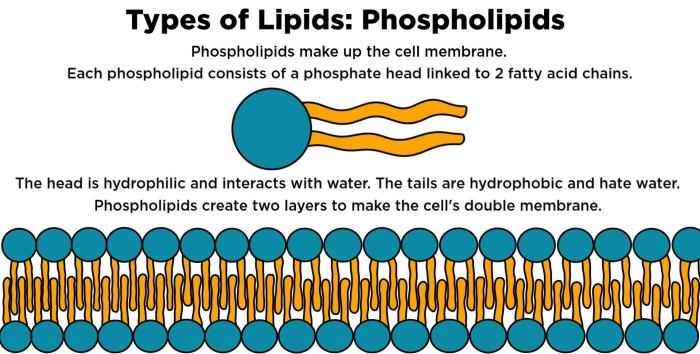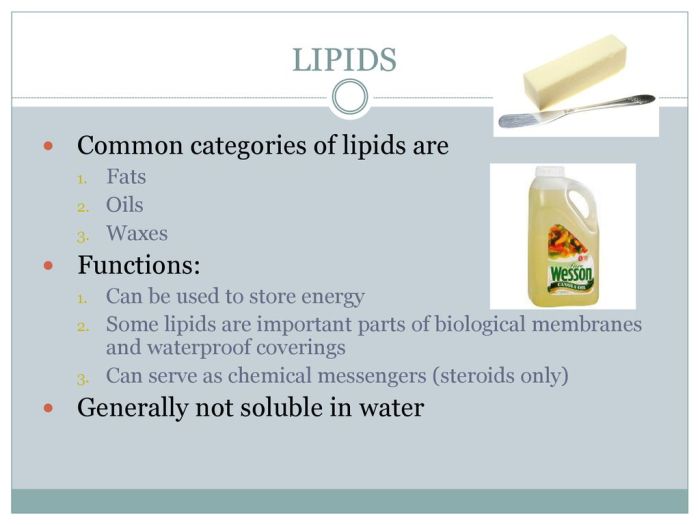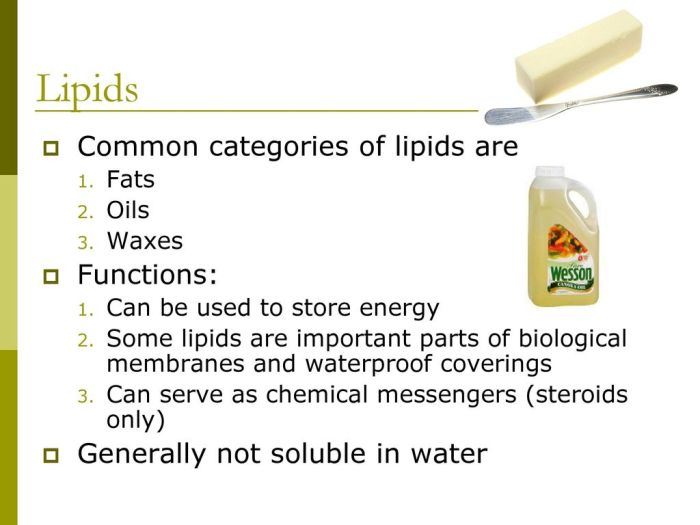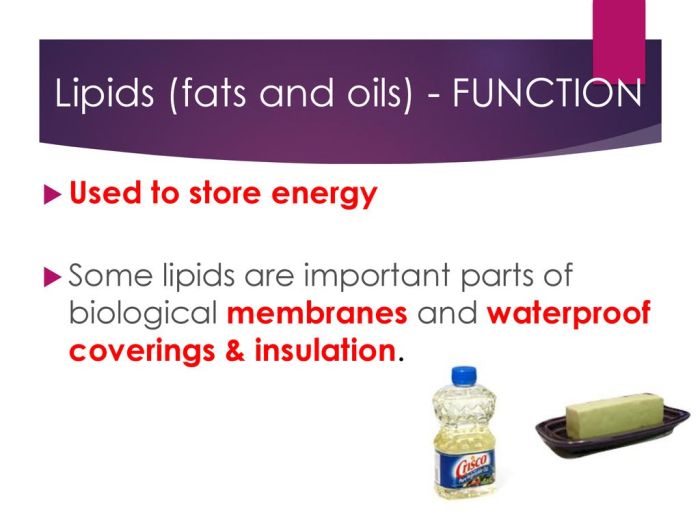Lipids are important parts of biological membranes and waterproof coverings – Lipids, the building blocks of biological membranes and waterproof coverings, play a pivotal role in the structure and function of living organisms. This comprehensive overview delves into the chemical composition, diverse functions, and medical applications of lipids, providing a comprehensive understanding of their significance in the realm of biology.
Lipids: Essential Components of Biological Membranes and Waterproof Coverings

Lipids are a diverse group of organic molecules that play crucial roles in the structure and function of biological membranes and waterproof coverings.
1. The Composition and Structure of Lipids
Lipids are characterized by their insolubility in water and solubility in organic solvents. They are composed of long hydrocarbon chains and may contain various functional groups, including carboxylic acids, alcohols, and phosphate groups.
The basic structure of a lipid molecule consists of a glycerol backbone with three fatty acid chains attached. The fatty acid chains can be saturated (no double bonds) or unsaturated (one or more double bonds).
Different types of lipids include phospholipids, glycolipids, and steroids.
2. Lipids in Biological Membranes
Lipids form the structural backbone of biological membranes. The amphipathic nature of lipids, with their hydrophobic hydrocarbon tails and hydrophilic head groups, allows them to form lipid bilayers.
Membrane lipids include phospholipids, glycolipids, and cholesterol. Phospholipids have a hydrophilic head group and two hydrophobic tails, forming the main structural components of membranes. Glycolipids have a carbohydrate head group and two hydrophobic tails, contributing to membrane stability. Cholesterol is a steroid that intercalates between phospholipids, regulating membrane fluidity.
3. Waterproof Coverings
Lipids play a vital role in the waterproofing of biological coverings, such as the skin and leaves.
Waterproof coverings include cuticular waxes in plants, feathers and skin in animals, and chitin in insects. Lipids in these coverings form hydrophobic barriers that prevent water loss and protect against environmental stresses.
4. Medical Applications of Lipids, Lipids are important parts of biological membranes and waterproof coverings
Lipids have numerous medical applications, including drug delivery and tissue engineering.
Liposomes are lipid-based vesicles that can encapsulate and deliver drugs to specific tissues. Lipids are also used in tissue engineering to create scaffolds and matrices for cell growth and regeneration.
5. Lipid Metabolism
Lipid metabolism involves the synthesis, degradation, and storage of lipids.
Lipid synthesis occurs in the liver and adipose tissue, while degradation occurs in the mitochondria. Lipid storage occurs in adipose tissue as triglycerides.
Lipid metabolism is regulated by various enzymes and hormones, ensuring the maintenance of lipid homeostasis.
6. Lipid-Related Disorders
Disruptions in lipid metabolism can lead to lipid-related disorders.
Hyperlipidemia is a condition characterized by elevated levels of lipids in the blood, increasing the risk of cardiovascular disease. Atherosclerosis is a condition where lipids accumulate in the arteries, forming plaques that narrow the vessels and restrict blood flow.
Treatment options for lipid-related disorders include lifestyle modifications, medications, and surgical interventions.
Key Questions Answered: Lipids Are Important Parts Of Biological Membranes And Waterproof Coverings
What is the primary function of lipids in biological membranes?
Lipids form the structural framework of biological membranes, creating a selectively permeable barrier that regulates the movement of molecules into and out of cells.
How do lipids contribute to the waterproof nature of biological coverings?
Lipids form a hydrophobic layer that repels water, preventing the entry of external fluids and protecting organisms from dehydration.
What are some medical applications of lipids?
Lipids are used in drug delivery systems, tissue engineering, and as emulsifiers in various pharmaceutical formulations.


